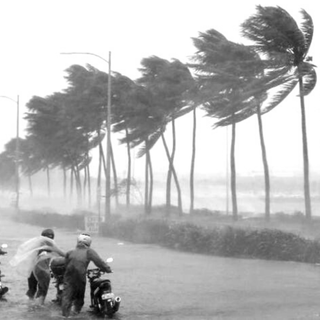
Companies Are Trading CO2 Emissions to Tackle Global Warming. But the System Lacks Accountability
Without proper regulations, carbon trading can increase greenhouse gas emissions and concentrate wealth among the rich.

India is among the top five most polluting countries in the world, releasing more than 7% of the world’s carbon dioxide. Though India is a part of the 2002 Kyoto Protocol, an international agreement that involved several countries coming together to pledge a reduction in greenhouse gas emissions that result in global warming, India is not obliged to commit to reducing emissions due to its classification as a “developing” country.
Despite this, India has continued to put in voluntary efforts to reduce emissions. One way in which countries around the world, including India, are attempting to reduce emissions is through carbon trading — a process in which countries voluntarily buy and sell the rights to emit carbon dioxide to respond to the climate crisis. However, carbon trading, prevalent across European Union (EU) countries, has not worked out globally as well for India due to a lack of binding international regulations.
Carbon trading involves something called a cap-and-trade scheme, wherein companies set an overall limit (cap) on the amount of emissions allowed from sources like the automobile and power industries — known for releasing high amounts of carbon. The government in a particular region or country issues a permit for the agreed limit — either for free or via an auction system (trade). Think of these as carbon credits: if any company succeeds in reducing its own emissions below the limit it agreed to, it can sell the excess permits to other companies for cash. If it exceeds the limit, the company needs to buy more permits — a sort of check to manage the extra emissions.
Projects similar to carbon trading have shown positive results in the past. For example, trading on sulfur dioxide permits has helped reduce the amount of acid rain in the U.S. The sulfur trading program came under the U.S Clean Air Amendments Act, 1990. This suggests trading programs can succeed in reducing environmental damage if they come under a robust legal ambit.
When it comes to carbon trading, the emissions system has not managed to get a similar legal backing in the U.S. yet. Without legal safeguards, a system like carbon trading is easily cheated — a company or country can reduce emissions in one area and release them in another, gather credits fraudulently, and even over-allocate free carbon credits to the biggest polluters.
Plus, there’s no clear way to measure how much a company or country is actually polluting the environment, making the entire process work on assumptions and rendering its effect on climate change minimal. Thus, experts warn that in some cases, carbon trading can make emissions worse instead of reducing them.
Related on The Swaddle:
World Will See Second‑Largest Rise Ever in Carbon Emissions in 2021: Report
From an economic perspective, carbon trading is also plagued by certain limitations. Trading on commodities that are not driven by demand — such as carbon dioxide — can have volatile consequences. Free markets work under the basic rule of demand and supply — if there isn’t enough supply, demand increases, making the product valuable. With respect to carbon trading, there’s enough supply and no reason for the demand. This can theoretically be solved by legally increasing the cap on emissions, which would boost the need for carbon emissions certificates — but this doesn’t exist as of now. Moreover, the lack of stringent regulations governing the trading system impacts the overall efficacy.
Take India’s case as an example. The country invested in several low carbon technologies, switching to renewable energy and more in order to rack up hundreds of millions of emission reduction certificates — 750 million as of 2020 after being issued 1.95 billion certificates. The Indian government primarily did this because they were repeatedly assured that they can sell these certificates. But not many bought them due to lack of enforcement — including those in the compliance market i.e. developed countries under the Kyoto Protocol who had pledged emission reductions. The price of carbon collapsed from USD 25 (INR 1,800) to a few cents, and Indian entities with these certificates were left with practically nothing.
While countries around the world met for the United Nations Climate Change Conference in 2019, debate perched on the ability to sell these carbon credits. While many countries argued that carbon trading is an outdated process from the Kyoto Protocol era, countries like India and Brazil argued that ignoring the entire process from the Kyoto system will cause a lack of trust in how countries like the U.S. carry out climate change policies. The talks ended without proper resolution.
The only reasonable solution to the continuance of carbon trading is maintaining strict international legal regulations that include taxing carbon and enforcing commitments to reduce emissions. Without this, the planet remains at the mercy of powerful fossil fuel companies and the few countries that enable — and benefit from — them.
Aditi Murti is a culture writer at The Swaddle. Previously, she worked as a freelance journalist focused on gender and cities. Find her on social media @aditimurti.
Related


Depression, Risk of Suicide is Worsening With Severe Heatwaves, Floods: Study
